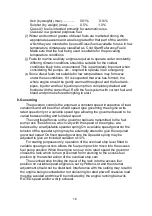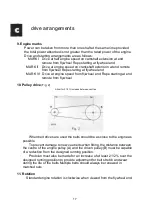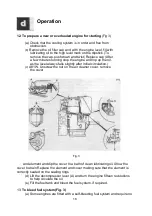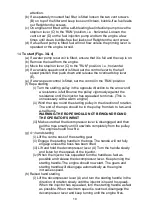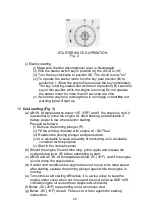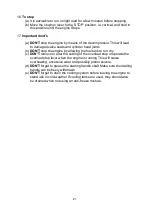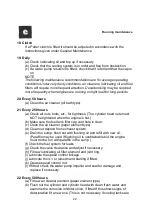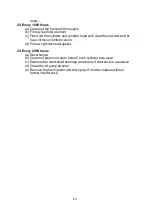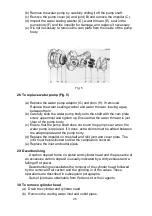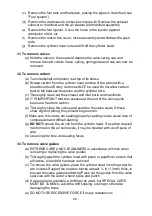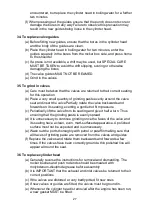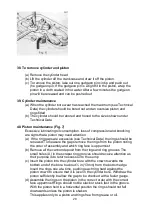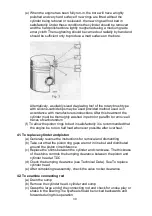
15
practical to change o
i
ls as the eng
i
ne passes from one climate to
another. Under these circumstances
,
for eng
i
nes operating fire pumps
or other equipment required IN AN EMERGENCY
,
i
t is recommended
that the oil selected should be of a v
i
scos
i
ty suitable for the coldest
cl
i
mate likel
y
to be encountered. I
t
should be noted that this
recommendat
i
on
i
s made w
i
th ease of hand start
i
ng as a first
consideration
.
7. Fuel
(a) The bulk storage of diesel fuel is subject to official regulations, but
generally, storage is permitted above ground provided containers of
authorised construction and capacity are used DO NOT use
galvanised containers or the zinc coating will react with the fuel and
damage the fuel injection equipment.
(b) To prevent the harmful effects of moisture absorbed by fuel, provision
must be made for draining off water which may accumulate at the base
of the storage tank. The amount of water absorbed by fuel can be
minimised by keeping storage tanks as full as possible and ensuring
that filler caps, inspection covers, etc., have effective sealings
(c) Tank cocks for withdrawing fuel should be fitted a short distance above
the base, enabling clean fuel to be withdrawn without disturbing water
or sediment
(d) To ensure proper working of the fuel system the fuel must always be
CLEAN.
(e) Fuel should be allowed to settle before use Sludge or water at the
bottom of the container must not be used. Due to increased engine
repair costs, a cheap fuel may prove very expensive in the long run.
(f) Funnels or cans used for fuel should not be used for anything else and
must be kept absolutely clean. They should be thoroughly dried before
use
(g) The fuel tank should always be filled through a strainer.
Occasionally the tank should be flushed out with petrol or paraffin.
(h) The fuel used should be high grade light diesel fuel. gas oil or DERV
fuel It should comply with B.S 2869:1967 Class A1 or A2, an extract of
which is as follows:
Class A1 Class A2
Cetane number (min.).............. 50 45
Viscosity (kinematic) at
37.8°C(100°F).. .................. 1,6 to 6 .0 cSt 1 6 to 6.0 cSt
Carbon residue Conradson
on 10% residue (by weight)
(max)........................ 0.2% 0.2% '
Distillation recovered at
357°C (675°F) (by volume). 90% 90%
Plash point (closed)........... 55°C(130°F ) 55°C(130°F)
Water (by volume) (max) ...... 0.05% 0.05%
Sediment (by weight) (max)..... 0.01% 0.01%
















